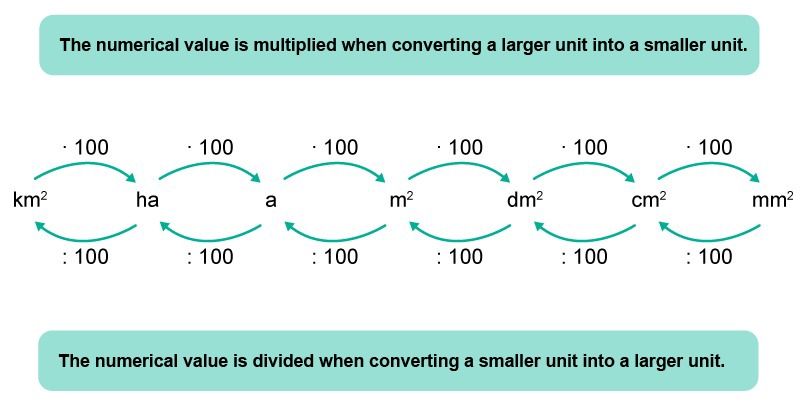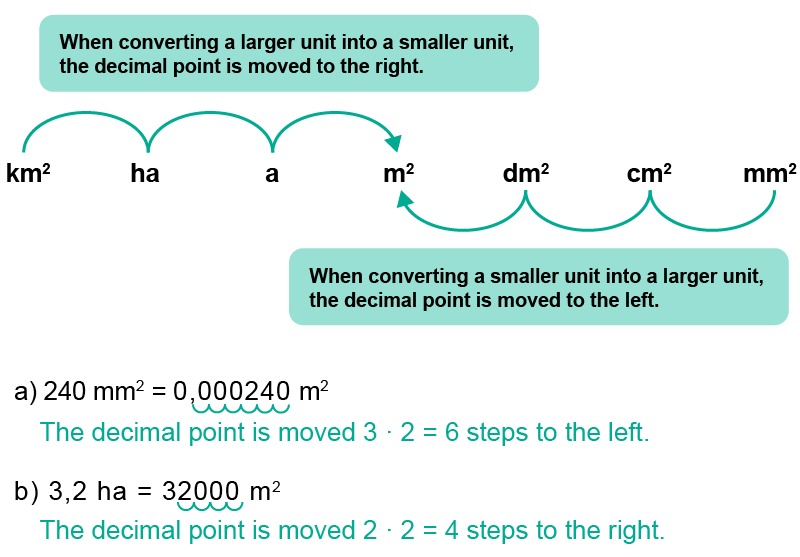Units of area
Since the ratio for units of length in the SI system is ten, the ratio for units of area [[$ \text{m}^2 = \text{m} \cdot \text{m} $]] must be [[$10\cdot10 = 100$]]. The table shows the most common units of area.

[[$\begin{align} \text{3,2 km}^2 = 100 \cdot \text{3,2 ha} = \text{320 ha} && \text{Convert to one unit smaller.} \end{align}$]]
b) [[$ 16200 $]] square centimetres to square metres.
[[$\begin{align} 16200 \text{ cm}^2 = \dfrac{16200}{100 \cdot 100} \text{ m}^2 = \text{1,62 m}^2 && \text{Convert to two units greater.} \end{align}$]]
Like in length unit conversions, we can take advantage of the knowledge that the number notation system we use is decimal and has a base number of [[$10$]]. Since the area unit conversion ratio is [[$100$]], each unit conversion always moves the decimal point by two steps.
Example 3
Convert the areas a) [[$240$]] mm2 and b) [[$\text{3,2}$]] ha to square metres.

| Symbol | Name | In basic units |
|---|---|---|
| km2 | square kilometre | 1 000 000 m2 |
| ha | hectare | 10 000 m2 |
| a | are | 100 m2 |
| m2 | square metre | 1 m2 |
| dm2 | square decimetre | 0,01 m2 |
| cm2 | square centimetre | 0,0001 m2 |
| mm2 | square millimetre | 0,000001 m2 |
As with lengths, a smaller unit can be converted into a larger one by dividing its numerical value by the ratio. Conversely, a larger unit can be converted into a smaller unit by multiplying its numerical value by the ratio.

Example 2
Convert:
a) [[$ \text{3,2} $]] square kilometres to hectares.[[$\begin{align} \text{3,2 km}^2 = 100 \cdot \text{3,2 ha} = \text{320 ha} && \text{Convert to one unit smaller.} \end{align}$]]
b) [[$ 16200 $]] square centimetres to square metres.
[[$\begin{align} 16200 \text{ cm}^2 = \dfrac{16200}{100 \cdot 100} \text{ m}^2 = \text{1,62 m}^2 && \text{Convert to two units greater.} \end{align}$]]
Like in length unit conversions, we can take advantage of the knowledge that the number notation system we use is decimal and has a base number of [[$10$]]. Since the area unit conversion ratio is [[$100$]], each unit conversion always moves the decimal point by two steps.
Example 3
Convert the areas a) [[$240$]] mm2 and b) [[$\text{3,2}$]] ha to square metres.